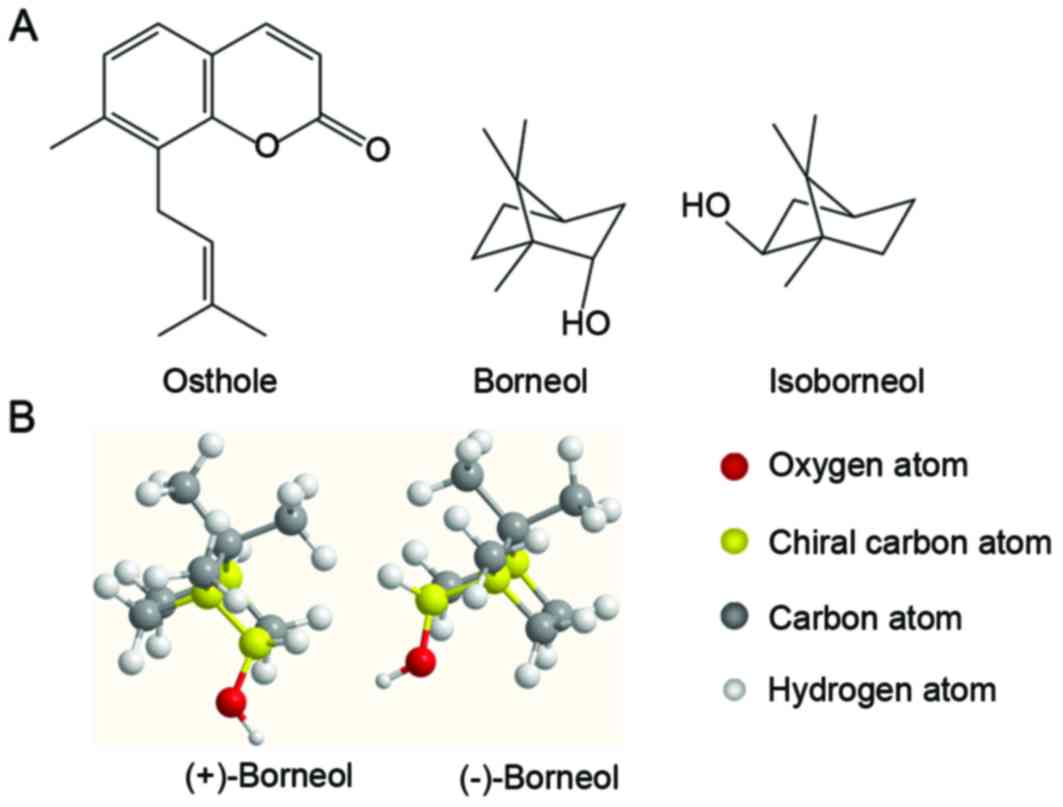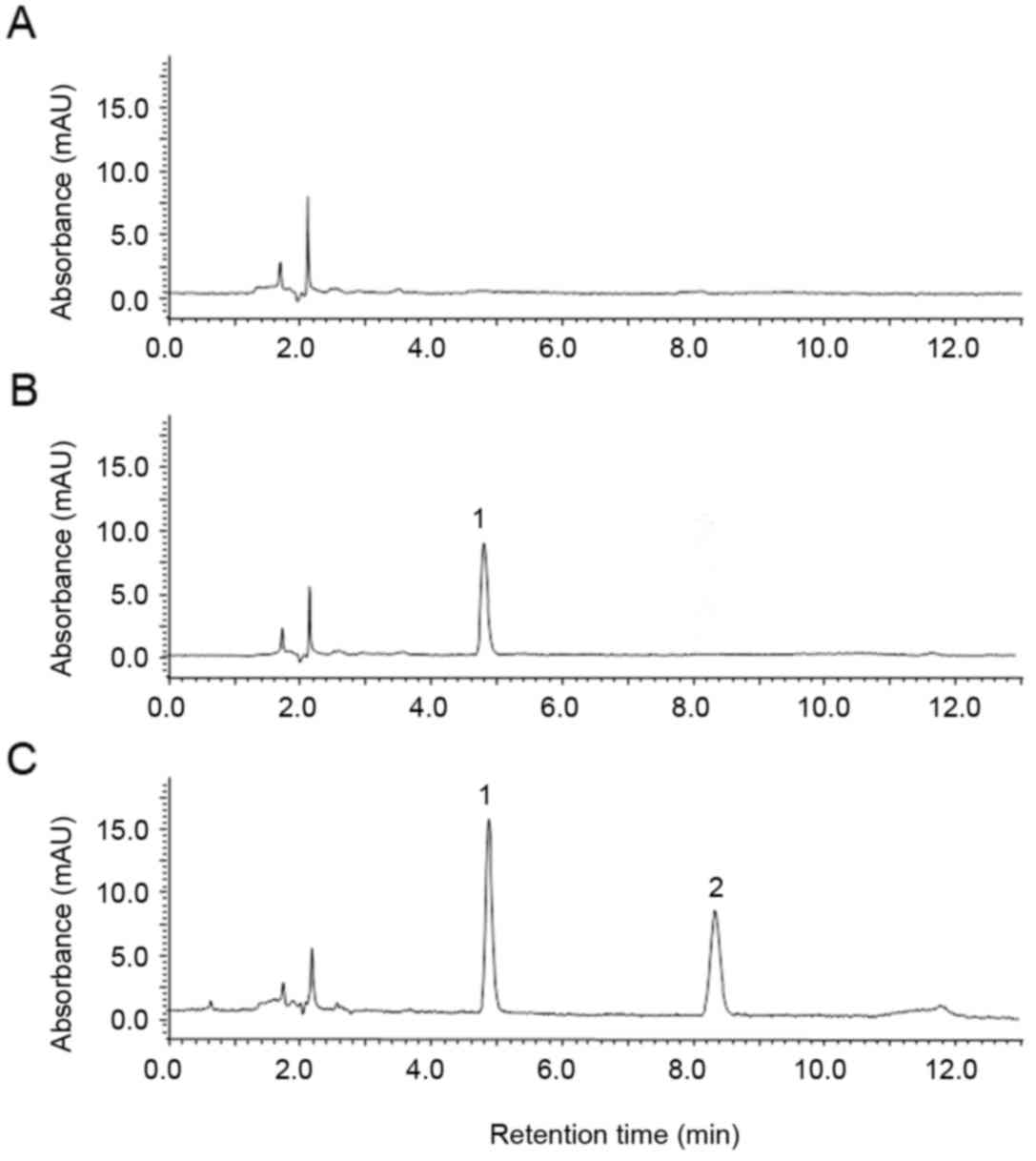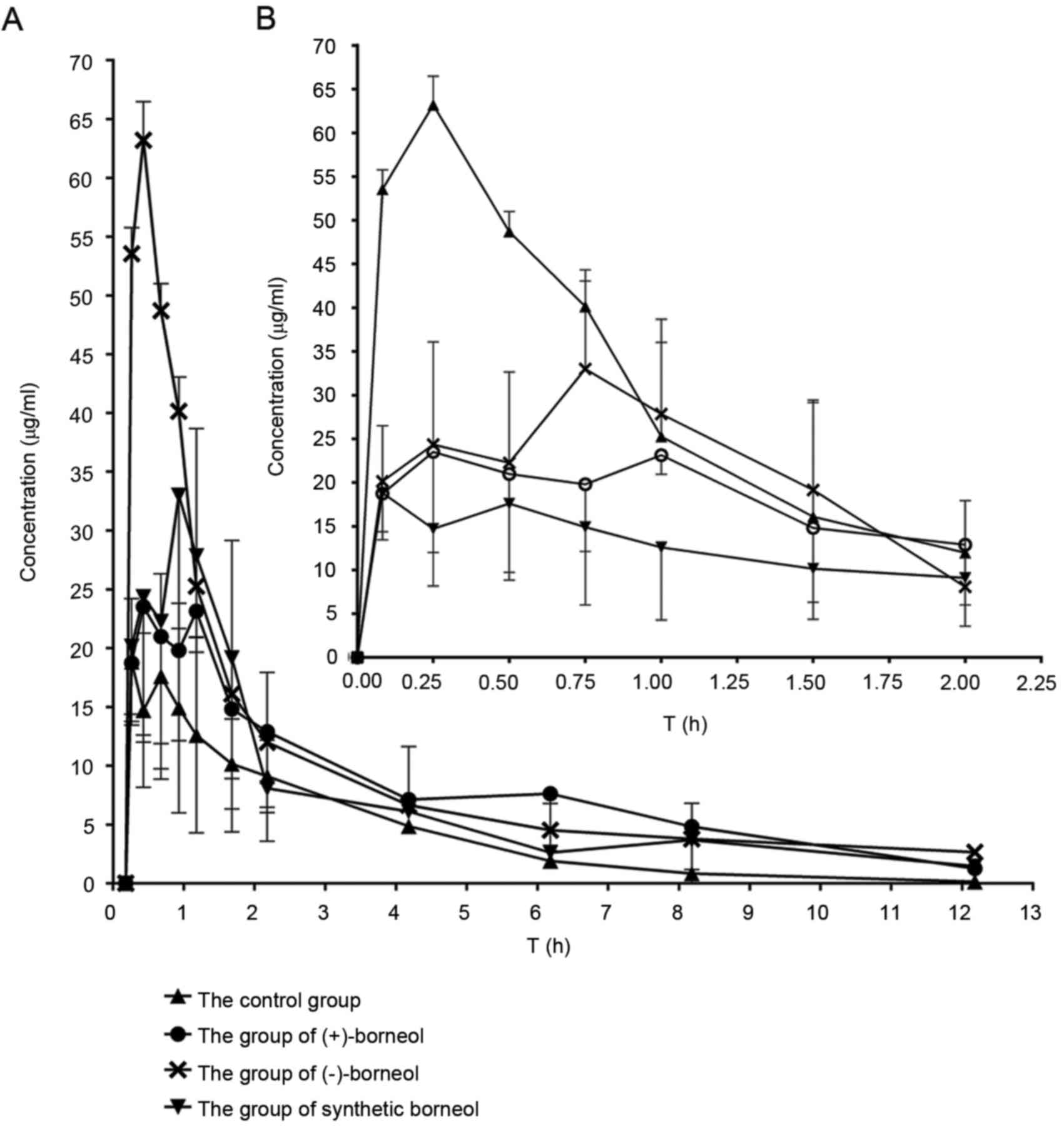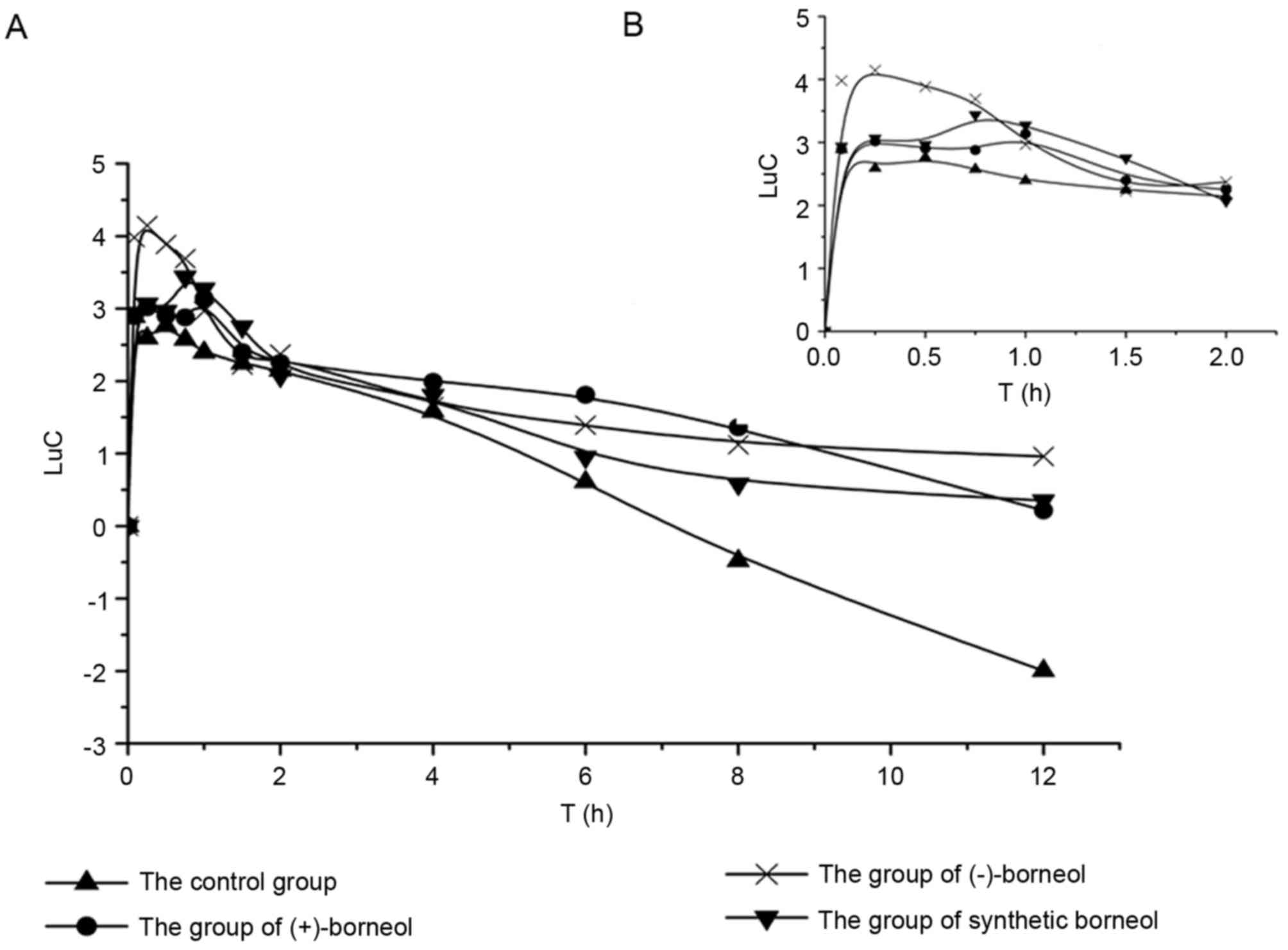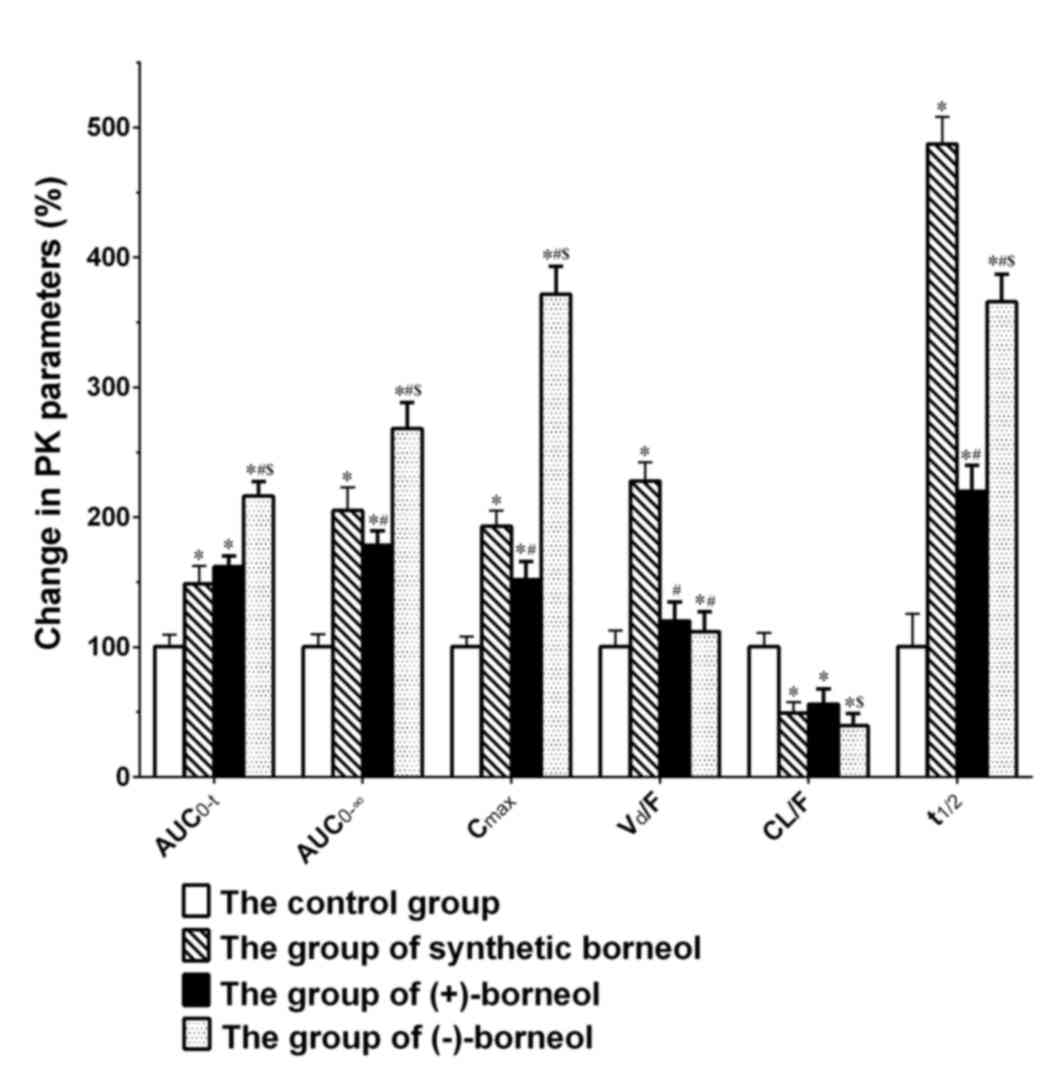|
1
|
Liao PC, Chien SC, Ho CL, Wang EI, Lee SC,
Kuo YH, Jeyashoke N, Chen J, Dong WC, Chao LK and Hua KF: Osthole
regulates inflammatory mediator expression through modulating
NF-κB, mitogen-activated protein kinases, protein kinase C, and
reactive oxygen species. J Agr Food Chem. 58:10445–10451. 2010.
View Article : Google Scholar
|
|
2
|
Chen T, Liu W, Chao X, Qu Y, Zhang L, Luo
P, Xie K, Huo J and Fei Z: Neuroprotective effect of osthole
against oxygen and glucose deprivation in rat cortical neurons:
Involvement of mitogen-activated protein kinase pathway.
Neuroscience. 183:203–211. 2011. View Article : Google Scholar
|
|
3
|
Zhang Q, Qin L, He W, Van Puyvelde L, Maes
D, Adams A, Zheng H and De Kimpe N: Coumarins from Cnidium monnieri
and their antiosteoporotic activity. Planta Med. 73:13–19. 2007.
View Article : Google Scholar
|
|
4
|
Lin YC, Lin JC, Hung CM, Chen Y, Liu LC,
Chang TC, Kao JY, Ho CT and Way TD: Osthole inhibits insulin-like
growth factor-1-induced epithelial to mesenchymal transition via
the inhibition of PI3K/Akt signaling pathway in human brain cancer
cells. J Agr Food Chem. 62:5061–5071. 2014. View Article : Google Scholar
|
|
5
|
Lee WH, Lin RJ, Lin SY, Chen YC, Lin HM
and Liang YC: Osthole enhances glucose uptake through activation of
AMP-activated protein kinase in skeletal muscle cells. J Agr Food
Chem. 59:12874–12881. 2011. View Article : Google Scholar
|
|
6
|
Chao XD, Zhou J, Chen T, Liu W, Dong W, Qu
Y, Jiang X, Ji X, Zhen H and Fei Z: Neuroprotective effect of
osthole against acute ischemic stroke on middle cerebral ischemia
occlusion in rats. Brain Res. 1363:206–211. 2010. View Article : Google Scholar
|
|
7
|
Shi JF, Chen Q, Yang W, Yang HP, Liu J,
Wang XM and He X: Comparative study of pharmacokinetics and tissue
distribution of osthole in rats after oral administration of pure
osthole and Libanotis buchtormensis supercritical extract. J
Ethnopharmacol. 145:25–31. 2013. View Article : Google Scholar
|
|
8
|
Zhao G, Peng C, Du W and Wang S:
Pharmacokinetic study of eight coumarins of Radix Angelicae
Dahuricae in rats by gas chromatography-mass spectrometry.
Fitoterapia. 89:250–256. 2013. View Article : Google Scholar
|
|
9
|
Zhang LF, Hu X, Wang P and Zhang L:
Metabolism of osthol in isolated hepatocytes of rat. Yao Xue Xue
Bao. 44:1131–1135. 2009.(In Chinese).
|
|
10
|
Ambudkar SV, Sarfaty C Kimchi, Sauna ZE
and Gottesman MM: P-glycoprotein: From genomics to mechanism.
Oncogene. 22:7468–7485. 2003. View Article : Google Scholar
|
|
11
|
Hassanpouraghdam MB, Hassani A, Vojodi L,
Asl B Hajisamadi and Rostami A: Essential oil constituents of
Lavandula officinalisChaix. from Northwest Iran. J Agr Food Chem.
22:167–171. 2011.
|
|
12
|
Angioni A, Barra A, Cereti E, Barile D,
Coïsson JD, Arlorio M, Dessi S, Coroneo V and Cabras P: Chemical
composition, plant genetic differences, antimicrobial and
antifungal activity investigation of the essential oil of
Rosmarinus officinalis L. J Agr Food Chem. 52:3530–3535. 2004.
View Article : Google Scholar
|
|
13
|
Nezhadali A, Navavi M and Rajabian M:
Chemical composition of the essential oil of Thymus vulgaris L.
from Iran. J Essent Oil Bear Pl. 15:368–372. 2012. View Article : Google Scholar
|
|
14
|
Harish R, Divakar S, Srivastava A and
Shivanandappa T: Isolation of antioxidant compounds from the
methanolic extract of the roots of Decalepis hamiltonii (Wight and
Arn.). J Agric Food Chem. 53:7709–7714. 2005. View Article : Google Scholar
|
|
15
|
Granger RE, Campbell EL and Johnston GA:
(+)- And (−)-borneol: Efficacious positive modulators of GABA
action at human recombinant alpha1beta2gamma2L GABA(A) receptors.
Biochem pharmacol. 69:1101–1111. 2005. View Article : Google Scholar
|
|
16
|
Mihara S and Shibamoto T: The role of
flavor and fragrance chemicals in TRPA1 (transient receptor
potential cation channel, member A1) activity associated with
allergies. Allergy Asthma Clin Immunol. 11:112015. View Article : Google Scholar :
|
|
17
|
Lai XJ, Zhang L, Li JS, Liu HQ, Liu XH, Di
LQ, Cai BC and Chen LH: Comparative pharmacokinetic and
bioavailability studies of three salvianolic acids after the
administration of Salviae miltiorrhizae alone or with synthetical
borneol in rats. Fitoterapia. 82:883–888. 2011. View Article : Google Scholar
|
|
18
|
Ren-Zhong W, Yan-Yan X, Yan-Ping L,
Mao-Jin Z and Chang-Xiao L: Enhancing effects of different dosages
of borneol on pharmacokinetics of salvanic acid B after oral
administration to rats. J Asian Nat Prod Res. 14:538–544. 2012.
View Article : Google Scholar
|
|
19
|
Zhou Y, Li W, Chen L, Ma S, Ping L and
Yang Z: Enhancement of intestinal absorption of akebia saponin D by
borneol and probenecid in situ and in vitro. Environ Toxicol
Pharmacol. 29:229–234. 2010. View Article : Google Scholar
|
|
20
|
Li Z, Sun D, Yang H, Liu X, Luan L, Bai J
and Cui H: Effect of borneol on the distribution of danshensu to
the eye in rabbit via oral administration. Curr Eye Res.
35:565–572. 2010. View Article : Google Scholar
|
|
21
|
Lu Y, Chen X, Du S, Wu Q, Yao Z and Zhai
Y: The in situ and in vivo study on enhancing effect of borneol in
nasal absorption of geniposide in rats. Arch Pharm Res. 33:691–696.
2010. View Article : Google Scholar
|
|
22
|
He H, Shen Q and Li J: Effects of borneol
on the intestinal transport and absorption of two P-glycoprotein
substrates in rats. Arch Pharm Res. 34:1161–1170. 2011. View Article : Google Scholar
|
|
23
|
Jinno N, Tagashira M, Tsurui K and Yamada
S: Contribution of cytochrome P450 and UDT-glucuronosyltransferase
to the metabolism of drugs containing carboxylic acid groups: Risk
assessment of acylglucuronides using human hepatocytes.
Xenobiotica. 44:677–686. 2014. View Article : Google Scholar
|
|
24
|
Seo KA, Kim H, Ku HY, Ahn HJ, Park SJ, Bae
SK, Shin JG and Liu KH: The monoterpenoids citral and geraniol are
moderate inhibitors of CYP2B6 hydroxylase activity. Chem Biol
Interact. 174:141–146. 2008. View Article : Google Scholar
|
|
25
|
Dai DZ, Du GM, Wang J, Jiang JJ, Chen ZM
and Zhang ZC: Comparison of penetration enhancer on skin of azone
and borneolum to osthole. J Jinling Institute Technol. 24:90–93.
2008.
|
|
26
|
Hu DH, Wang YG, Chen ZW, MA ZC, Liang QD,
Xiao CY, Tan HL, Tang XL, Li H, Shen GL, et al: Effect of compound
Danshen Dripping Pills on rat hepatic cytochrome P450. Chin J
Pharmacol Toxicol. 27:678–684. 2013.
|
|
27
|
Cai Z, Hou S, Li Y, Zhao B, Yang Z, Xu S
and Pu J: Effect of borneol on the distribution of gastrodin to the
brain in mice via oral administration. J Drug Target. 16:178–184.
2008. View Article : Google Scholar
|
|
28
|
Yun F, Kang A, Shan J, Zhao X, Bi X and Di
L: A rapid and sensitive LC-MS/MS method for the determination of
osthole in rat plasma: Application to pharmacokinetic study. Biomed
Chromatogr. 27:676–680. 2013. View Article : Google Scholar
|
|
29
|
Zhang HY, W KW, Qian L, et al: Effect of
borneol on promoting absorption of oral drugs. Chin J Exp Tradit
Med Formulae. 18:294–297. 2012.(In Chinese).
|
|
30
|
Zheng LQ, Z DS and Liu JH: The study on
the distribution in tissue of osthole in rats by the RP-HPLC. Chin
Pharm J. 11:1666–1668. 2006.(In Chinese).
|
|
31
|
Yan-Yu X, Qi-Neng P and Zhi-Peng C: The
enhancing effect of synthetical borneol on the absorption of
tetramethylpyrazine phosphate in mouse. Int J Pharm. 337:74–79.
2007. View Article : Google Scholar
|
|
32
|
Lv X, Wang CY, Hou J, Zhang BJ, Deng S,
Tian Y, Huang SS, Zhang HL, Shu XH, Zhen YH, et al: Isolation and
identification of metabolites of osthole in rats. Xenobiotica.
42:1120–1127. 2012. View Article : Google Scholar
|
|
33
|
Kim H, Kim KB, Ku HY, Park SJ, Choi H,
Moon JK, Park BS, Kim JH, Yea SS, Lee CH, et al: Identification and
characterization of potent CYP2B6 inhibitors in
woohwangcheongsimwon suspension, an herbal preparation used in the
treatment and prevention of apoplexy in Korea and China. Drug Metab
Dispos. 36:1010–1015. 2008. View Article : Google Scholar
|
|
34
|
Yu B, Ruan M, Dong X, Yu Y and Cheng H:
The mechanism of the opening of the blood-brain barrier by borneol:
A pharmacodynamics and pharmacokinetics combination study. J
Ethnopharmacol. 150:1096–1108. 2013. View Article : Google Scholar
|
|
35
|
Lu Y, Du S, Yao Z, Zhao P and Zhai Y:
Study on natural borneol and synthetic borneol affecting mucosal
permeability of gardenia extract. Zhongguo Zhong Yao Za Zhi.
34:1207–1210. 2009.(In Chinese).
|
|
36
|
Zhou JW: The influence and mechanism of
borneol, synthetic borneol and menthol on the P-glycoprotein. PhD
dissertationNanjing Normal University. China Knowledge Resource
Integrated Database 6:2011.(In Chinese).
|
|
37
|
Caldwell J: Do single enantiomers have
something special to offer? Hum Psychopharm Clin. 16:S67–S71. 2001.
View Article : Google Scholar
|
|
38
|
Islam MR, Mahdi JG and Bowen ID:
Pharmacological importance of stereochemical resolution of
enantiomeric drugs. Drug Saf. 17:149–165. 1997. View Article : Google Scholar
|















